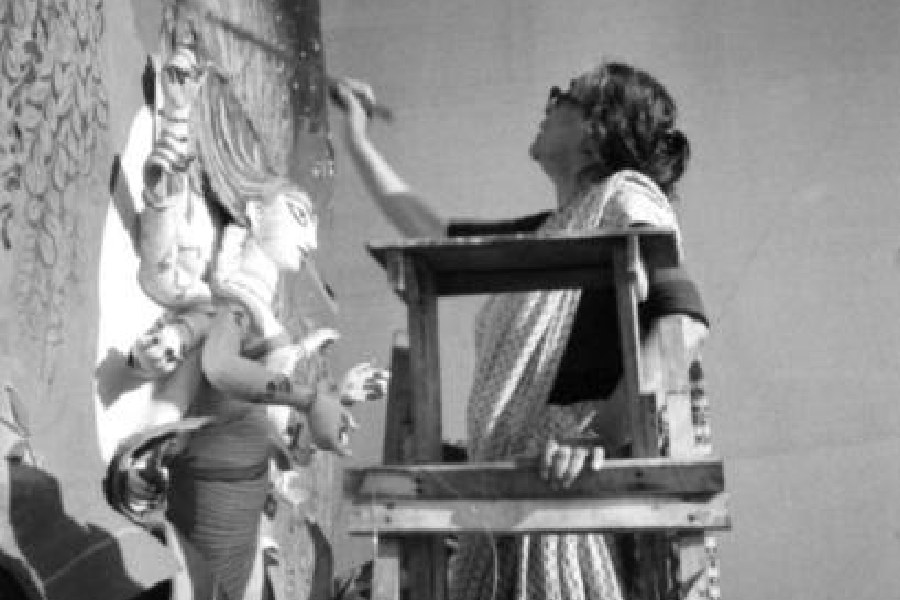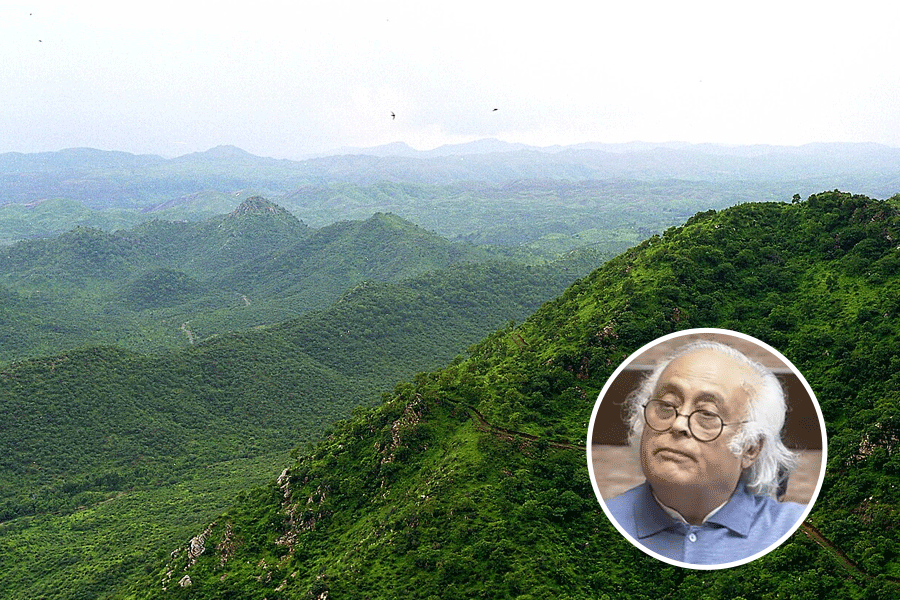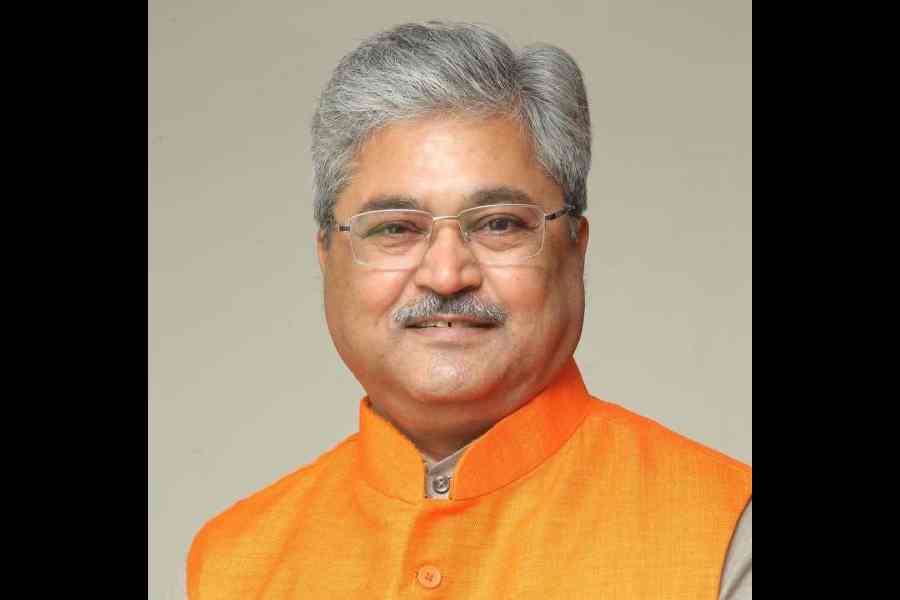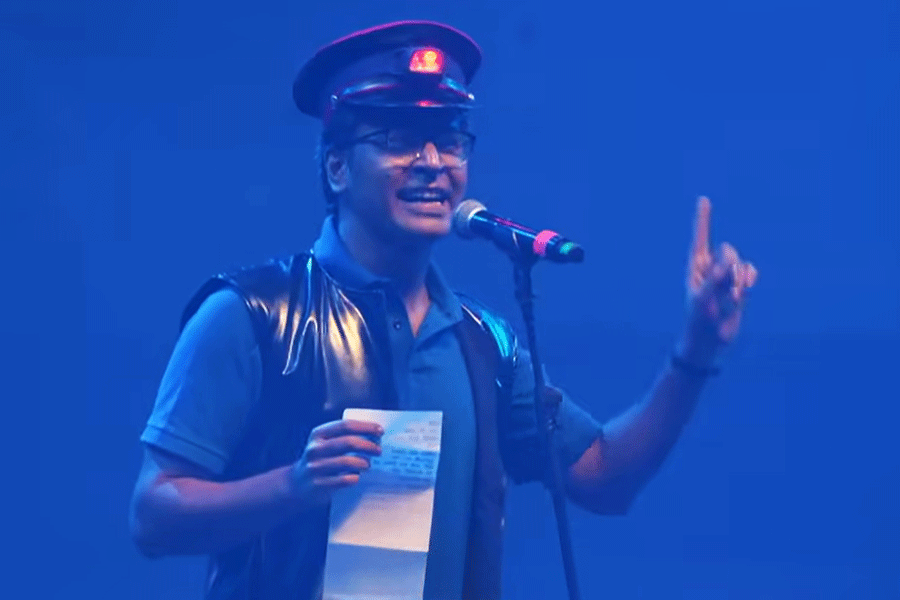There are two metal cast figures of bauls in Calcutta’s Rabindra Sadan complex. They are tall, ecstatic, there is something about them. This is sculptor Meera Mukherjee’s centenary year. The bauls are her only artworks on public display in Calcutta. She was also many other things — anthropologist, writer, painter, musician...
There are many stories about Meera. How she cut up her wedding sari into pieces and left a handi of rosogollas for her in-laws before walking out of her marriage. This was in 1951. Almost everyone who knew her talks about how temperamental she could be. “It was with much trepidation that I would climb the stairs of her Paddapukur home, half-fearing that she would throw me out,” says Supriya Banerjee of Gallerie 88, who has in her collection many of Meera’s artworks.
Meera was, for a while, part of The Group, a women artists’ collective founded by contemporaries Karuna Saha and Shanu Lahiri. In one of her essays, Meera Mukherjee: Recasting the Folk Form, Tapati Guha-Thakurta writes that she was unhappy to be in a coterie of women artists. But women formed the crux of many of her works; the woman as worker, the woman as mother, as caregiver. Banerjee talks of her first purchase of a Meera Mukherjee creation. She says, “An 11”x18”x6” bronze piece, a full figure of a woman selling shaluk (a variety of waterlily). I just loved the dignity and pride oozing out of that piece.”
Meera never received a formal education but she knew a lot, read a lot. “As a child I did not know that I would eventually become an artist, although I had a vague longing for it,” she writes in one of her diaries.
She joined Calcutta’s Indian Society of Oriental Art and eventually enrolled herself in Delhi Polytechnic, where she studied painting, graphics and sculpture. When Meera returned to Calcutta, she trained briefly with the Indonesian artist Affandi at Santiniketan. Then came a big opportunity, an Indo-German scholarship that took her to the Academy of Fine Arts in Munich where she learnt painting, printmaking and sculpture.
In Munich, Meera learnt from Austrian artist and sculptor Toni Stadler the technique of the lost-wax method of metal casting wherein a mould is built around a sacrificial wax model and when the wax melts out the cavity is filled with molten metal. Stadler asked her: “Your country is so rich artistically, and yet you work in the style of the West. Why?” This, most likely, influenced her decision to return to India.
Meera the sculptor was in search of Vishwakarma, the god of craftsmen, and it was this spiritual quest born of much physical journeying that turned her into an anthropologist. She first went to Bastar in Madhya Pradesh. “I went to meet the Gharuas at Bastar, in Jagadalpur. I tracked them down. Then I began to learn the honest trade of these craftsmen,” she writes.
Thereafter, she went to south India and learnt the work of the acharyas. She also went to Mahabalipuram to learn stonework. “Almost everywhere I went, I saw that the artist was actually a workman,” she writes. In 1961, she got an Anthropological Survey of India fellowship for detailed study of metal craftsmanship across India, and for three years she toured the length and breadth of India. In her book Metal Craftsmen of India, one can see her drawings and sketches of each of the tools that the Gharuas use. It also describes in detail the method of casting used to produce the Dokra pieces.
“She embraced the world view of the traditional artisans,” says Guha-Thakurta. Indeed, Meera embraced frugality, austerity, toil and labour as a way of life.
Adip Dutta, who is Meera’s student and currently professor at Rabindra Bharati University, says, “I was acquainted with the European cire-perdue process of making moulds, which was with plaster and brick dust. But she used clay. And it was the most important material all through. She would say that without the material an artistic practice is nothing.”
In 1967, Meera won the President’s Award for master craftsmanship. Maitreyi Chatterjee, who has chronicled her life and works, writes: “The usual vanity of a successful artist would have been stung being described as a craftsman. But not so for Meera Mukherjee...”
Supriya Banerjee, who would handle her correspondence the last seven years of her life, says: “She would always be short of money. She hardly kept anything for herself. She never owned a telephone, a car or a television. She was always immersed in her work.”
A commemorative volume on Meera, titled From the Depth of the Mould: Meera Mukherjee, A Centenary Tribute, will be published soon and there will be a solo exhibition of her works as well.
Meera spent a significant portion of her life at Elachi in Narendrapur, where her partner Nirmal Sengupta had set up his home and ran a school. She set up her foundry there. The last months of her life were spent at Elachi.
There was something almost mysterious and transcendental about the way Meera worked and died, says Guha-Thakurta. Her last work, The Buddha, began as a commissioned work. Ashoka, her other monumental work from the 1970s, had been made in 26 parts. Buddha was made in 60 parts. She completed it in a year’s time.
Meera saw the head of the Buddha emerge from the furnace, and within days of it she suffered a massive heart attack and died, surrounded by her sculptures.











